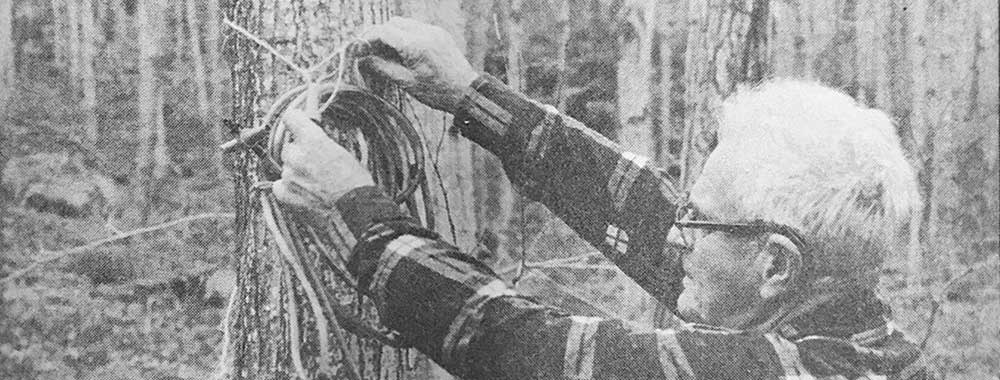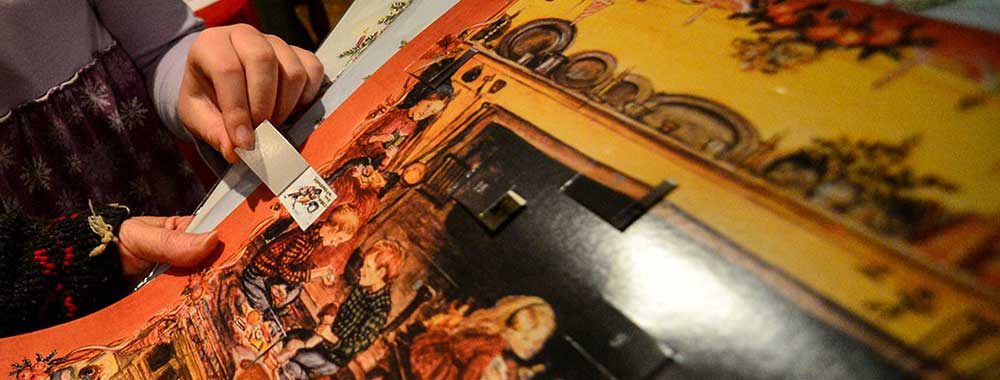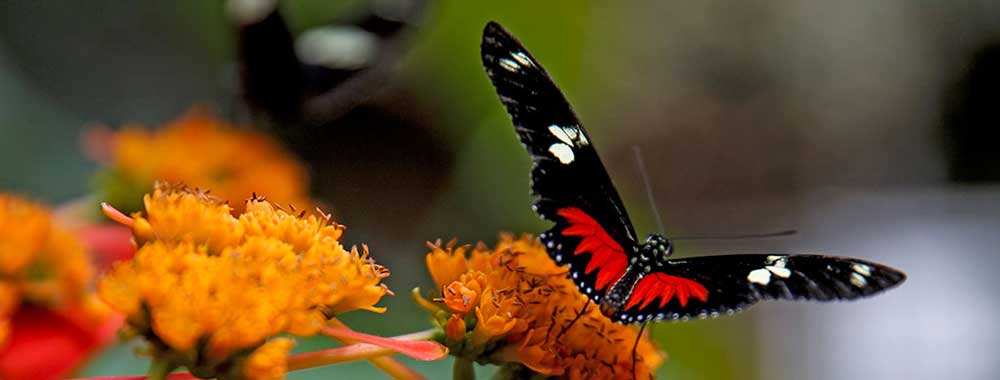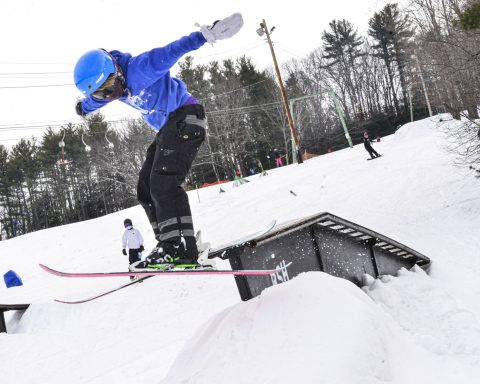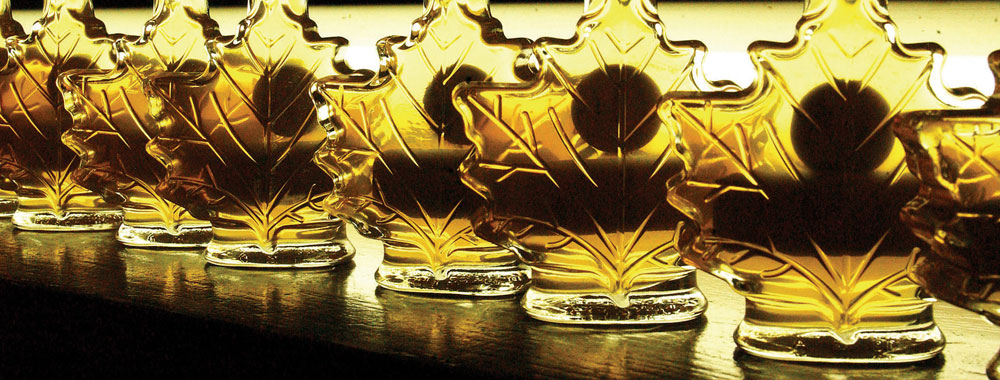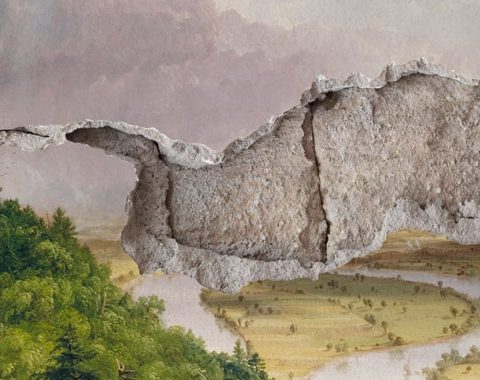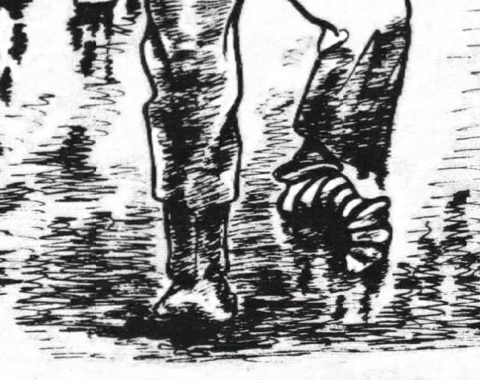An ingenious Yankee who knows how to grow more than one Christmas tree from a single stem has become the No. 1 tree farmer in America

Editor’s note: In searching our archives, we found this lovely story, first published in the December 1977 issue of UpCountry Magazine, about Linwood B. Lesure of Ashfield, Mass. Lesure, who was 73 years old at the time the article was published, was a third-generation Ashfield farmer who was well-known throughout Western Massachusetts and Southern Vermont. For over three decades, he served on the board of the Berkshire-Pioneer Maple Producers Association in various positions, including president and treasurer. He died in 1998 at the age of 93.
By Mark Miller ASHFIELD, Mass.
“When you don’t work for something like this and you get it, you feel kind of embarrassed,” Linwood B. Lesure said, reviewing the events that made him the National Outstanding Tree Farmer of 1977. That wasn’t saying he had not earned the honor, the second one ever awarded by the American Forest Institute. Last year, a Florida tree farmer received the honor, and previously recognition was bestowed only by state and region.
Lesure was sitting at his dining room table peering through bifocals and a rain-spattered window of the house he built from hemlock and spruce grown on his land. The sturdy 73-year-old and I had completed an invigorating tramp of the property and were being treated to hot coffee, homemade apple pie and cheese prepared by his wife of 49 years, Vera, who at the moment was sitting in a nearby easy chair. He pushed a callused hand over a ruddy brow and up into his bushy white hair and recalled the award ceremony at the Eastern States Exposition in Springfield.
Lesure was at the “Big E” to pick up the framed 1977 Massachusetts Outstanding Tree Farmer Certificate. At the same time, he would accept the framed 1977 New England Outstanding Tree Farmer Certificate. The governor was there — amid some grumbling that it had taken him three years in office to finally come to the fair. Coded directions for the 2 p.m. ceremonies were typed on sheets distributed to just about everyone but the Lesures. Gov. Michael S. Dukakis was to appear at a certain time to honor Lesure. So-and-so would introduce Dukakis. The governor would say such-and-such. A warning included: “Mr. Lesure does not know of National Award, so please do not mention it in remarks prior to the governor.”
But the Springfield (Mass.) Union violated the release date on the announcement sent out by the American Forest Institute and someone had already congratulated Lesure on the big one. Then word went around that the newspaper had reported it wrong, that Lesure was just in the running for the national award. The director of the Department of Environmental management, Richard Kendall, presented Lesure with the Massachusetts certificate, and then Secretary of Environmental Affairs Evelyn Murphy, Kendall’s boss, presented the New England certificate.
“When the governor didn’t give me the second award, I thought he was waiting for the third,” Lesure said. “He was.”
While Lesure (pronounced LurSure) had to act just a little more surprised than he actually was, he didn’t have to feign delight. One hundred eighty-three glacier-scoured acres of his land, which had been in his family for five generations, had been singled out from among 7 million acres owned by 34,000 tree farmers in all 50 states, according to the Forest Institute’s statistics. The two national runners-up were the owners of a 5,000-acre tree farm in Rolla, Mo., and an 800-acre spread in Harrison, Ark.
The irony in the staged surprise at the ceremony was that Lesure, notwithstanding the relative modesty of his acreage, is probably the most overqualified candidate the Forest Institute will ever select for the award.
He’s kind of the Buckminster Fuller of silviculture.

Linwood Barrus Lesure was born on the family farm on Spruce Corner Road in Ashfield in 1904. The property, about 320 acres, had been in his family since his great-great-grandmother moved to Ashfield in 1811, after her husband, Ebsen Lesure, drowned in Vermont. From boyhood, her son Roswell cleared and worked the land on which he and his son Edgar and his grandson, George, Linwood’s grandfather, were to raise beef cattle and dairy cows. Living off the land did not appeal to Linwood Lesure, or either of his two brothers, and he left the farm for work in construction. George Lesure died unexpectedly in 1945. The livestock was auctioned off. The farm was up for sale. Linwood, then 41, decided to sell the small contracting business he was running and buy the farm himself. His initial intention was to build on what had been a marginal dairy operation. Only 80 of the 320 acres were tillable and most of the soil was so rocky it had to be turned with a mattock.
Seven years later, a heart attack forced Lesure to give up dairying and rethink what to do with his life and his land. Figuring that both he and the land were better suited for growing trees, he sold his herd. He bought 3,000 fir balsam seedlings at the going rate of $25 per thousand from the state nursery in Amherst, planted them and applied to Ken DeBuke, the state forester, to have 183 acres of the place certified for membership in the American Tree Farm System. Six years later, having planted new batches of seedlings and transplanting natural sprouts, weeding them, shaping them, and learning by his mistakes working with Norway spruce, white pine and balsam fir, he was engaged full tilt in the business of selling Christmas trees and wreath material.
More important economically, Lesure and his son, Bob, generated an old maple syruping sideline into a 12-month operation. He also developed some of the back woodlots for periodic timber harvests and sold hay from their rolling meadows.
“I try to help my land do what it wants to,” Lesure is fond of saying. “I got land that had no value and now I’m getting something out of it. But, I hope that people just don’t get the impression that this means you just sit in the house and the trees grow for you.”
Lester A. DeCoster, manager of the American Forest Institute’s northeastern region, based in Bangor, Maine, inspected the Lesure farm with Hugh Putnam of Milton, head AFI forester in Massachusetts. DeCoster ticked off the reasons that Lesure, without consciously competing for the 1977 honors, was chosen.
That the Lesures make their living solely from the diversified farm, that only a small portion of the work on the farm is done by non-Lesures, that they get a variety of products from it, that they make it available to a dozen recreational uses, that Lesure kept meticulous records since 1945, all counted heavily toward his being tapped for Massachusetts and New England recognition. Added to this, Lesure’s innovative practices, his fervent promotion of conservation in his many civic roles and the subsequent wide exposure his farm attracted made him the obvious choice for the national honor, DeCoster said.
A true Yankee, albeit one with a Huguenot name, Lesure devised and honed into an art form the practice of harvesting several well-shaped, fully grown Christmas trees from a single balsam root system. Sawing off the first tree from the main stem two or three whorls from the ground, he allows a new “leader” branch to rise to the sun and grow into a tree of Christmas-tree size and shape, meanwhile ensuring a firm, active rootstock. When this second tree is cut, a third, usually from the other side of the main stem, can be grown to merchantable size. Lesure has harvested as many as seven Christmas trees from a single stem.
Lesure “put together” a pump system so that the three-man job of lifting maple sap buckets over snowbanks and up to a tank truck could be handled in less time with less loss of sap by one person. Powered by a three-horsepower gasoline engine, the pump pulls 20 gallons of sap per minute through a 50-foot hose (or 16 gallons a minute through a 100-foot hose) to the waiting truck. He sold the system to the G.M. Grimm Co. in Rutland, Vt. About 200 of these systems are now in use in New England.
Lesure originated the widely adopted practice of having visitors tag Christmas trees in the fall for cutting in December. The trees are more accessible and the outing more pleasant for some when the ground is clear.
His construction background helped him find ways to put to good use steam being wasted in syrup production. He rerouted steam rising from boiling sap so it would warm cold sap flowing into the sugaring house, thereby reducing fuel use by 15 percent. And, noting that hot air was wafting profitlessly up the chimney, he and Bob built a series of baffles and pipe, channeling it to warm the visitors’ rooms.
Nearly all the sugaring house, made of Lesure lumber, was designed with these visitors in mind. Interior glass panels are built so someone working in the sap-reducing rooms can slide them open and explain what’s going on. Equipment is placed so each step of the production is available.
From the beginning of March to mid-April, Bob’s wife Lynn (yes, she is confused with her father-in-law) presides over a 25-seat restaurant in the sugaring house, serving meals based around pancakes or French toast and maple syrup. Her kitchen is open from 9 a.m. to 6 p.m. in late November and early December, the area is used for selling wreaths and maple products while Christmas trees are on sale outside.

The opposite of the stereotypical laconic New England farmer, Linwood Lesure hasn’t hid his candle under a bushel — as they might say at the Ashfield Congregational Church, of which he is a member. A collection of yellowing newspaper clippings and magazine features about the Lesure farm since 1948 fills a large carton. Most deal with some aspect of forestry.
The Lesures have appeared on more than 40 television shows on five channels in Massachusetts discussing Christmas trees, maple sugar and an American farmer’s view of the Soviet Union, which Linwood and Vera visited in the early 1960s and keep current on through interviews with other farmers returning from there.
Lesure hasn’t slighted his civic responsibilities. A former Ashfield selectman and assessor, he is currently town moderator. (As a member of the local historical society, he knows the Pioneer Valley community of 1,400 was not named for the economically important white ash, which does grow there, but rather was named, from Huntsville, in 1765, by a Colonial governor of Massachusetts in honor of one Lord Ashfield.)
Lesure’s board memberships — concerning planning, soil conservation, watershed maintenance, agriculture, county fairs, Red Cross and other matters — have numbered about 25 and would have included election to the Franklin County Commission. “But the other fellow got three votes for every two I got,” he said. “1974 was a bad year for Republicans.”
For all his qualifications, Lesure notes that he owes much to the professional foresters who worked with him through the years — most recently, state forester Richard W. Kulis, of Greenfield, who coordinated a benign three-year conspiracy to make the Lesure farm better prepared for national honors than it needs to be, and David Robb Jr., of Cummington, a New England Forestry Foundation forester who rounded out Lesure’s whole program with timber stand improvement of 20 acres of sugar, maple white pine and spruce.
Kulis, who made out the application in the national contest to the American Forest Institute, wasn’t overconfident for a minute.
“Lin had good competition within the state, especially a tree farmer in Plymouth County,” he said. When the Massachusetts award went to Lesure, Kulis surveyed the other state winners in the region and figured the man who won in New Hampshire would get the New England award. Kulis won the same prize as Lesure, a trip for two for four days in San Diego, where the American Forestry Institute is holding its national convention.
Lesure has tried to grow trees “nature’s way,” as he puts it. For example, beavers built a dam and flooded some of his lowlands, threatening to kill a good part of the tree life there, but he didn’t trap them, shoot them or harass them.
“I knew there wasn’t food enough for them,” he said. “I knew they wouldn’t stay. They didn’t.”
His live-and-let-live philosophy is also expressed as follows: “I try never to cut out trees to put in a new forest crop when there’s already one there. I try to help the land to what it wants to do.
Apparently, the land wanted to become the best tree farm in the nation and Linwood Lesure helped it to be just that. •
